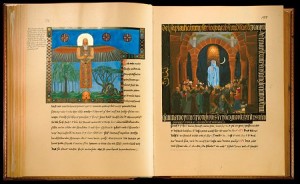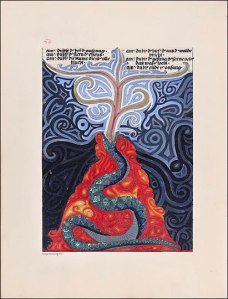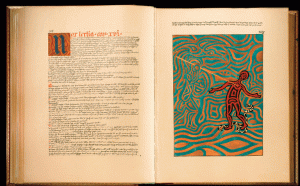I was thinking about getting another digital ereader for the family though I am somewhat ambivalent about it. I'm considering a B&N Nook Glowlight. Here is my need: I have boys that often need to read some form of literature which exists in the public domain so long as we are willing to forego the wonderful substance made of wood-pulp which feels so lovely between the fingers to dog-ear and scribble on and bookmark and even to smell. Additionally it can be helpful even to buy an expensive E-book in a format fairly impervious to the degradation and limitations of time and space.
The next best thing to paper books for reading might not be a phone or tablet. Think of the glare, the poor battery life, the aesthetic clutter, the distractability of the operating system, and the fact of the discomfort of even the lightest varieties of these during extended reading. The E Ink readers I think are much better for reading because their batteries last long enough to put on a shelf in the library like any book, and they read much more like paper. Yet there are terrible weaknesses. Some of my interface design gripes deal with the fact that annotation is still a terrible experience. I'm much better served by actual margins on physical paper which I can dog-ear, flip through, bookmark, tag with post-its, highlight, scribble on, sketch on etc. much more naturally and efficiently- though not in a way that is searchable.
In the future, improvements maybe made here. Imagine being able to study a text from a computer and annotate and bookmark and tag in detail and then to later reference those details from your E ink reader. Imagine scrawling a lasso and diagram in the margins of an e-book from your E-ink or phablet display and then to be able to tag those scribblings from your computer. Imagine desktop software capable of optionally pulling Chicago Style citations along with a text snippet for use in your essay from a book which you primarily read the first time from a Nook Glow-light E Ink display. Imagine easy, ubiquitous and standardized annotation capabilities delivered from a centralized cloud based platform, the augmentation of stylus based annotations and other fine touches can be imagined by cleverer people than me.
The question is - will E ink readers ever be a great experience? I think they can be but there doesn't seem to be a lot of interest around doing this stuff profoundly better than we are doing them right now. Considering the savings and the base utility - it's a worth-while trade off in many ways so I think in my own case I'll get one soon after agonizing about it. It's a shame we seem to be stuck in a plateau of interface an machine design on these E ink readers. It reminds me of the phone era just preceding the introduction of the iPhone. The hardware was all there- we just needed Steve Jobs to deliver us from the Egypt of terrible interface design. Steve - if you are listening - somewhere an E ink product manager needs a good muse!!

There is a part of me and a part of my culture that feels like E ink will never compare to a book. When I think about this - trying to be impartial and just, I would say this: it partly depends on the book. To give an extreme example, I just received "The Red Book" by Carle Gustav Jung the other day which I ordered from Amazon and an E ink based divice would be hardest pressed to ever deliver an experience comparable to the magic and wonder of parting the pages of that bad-boy which weighs about 8 pounds. That book is printed on "two different special types of paper" with library quality materials (see from about minute 19 in the first lecture found here from gnosis.org). The spine of which is partially hand-bound in Italy so that it takes 6 weeks to produce a printing.
Here is a moment I like a lot in the introduction of that book written by one of Jung's colleagues which by way of description gives us some insight into how it is that some books especially must be obtained and admired as material artifacts in order to be appreciated fully:
Tina Keller, who was in analysis with Jung from 1912, recalls that Jung "often spoke of himself and his own experiences": In those early days, when one arrived for the analytic hour, the so-called "red book" often stood open on an easel. In it Dr. Jung had been painting or had just finished a picture. Sometimes he would show me what he had done and comment upon it. The careful and precise work he put into these pictures and into the illuminated text that accompanied them were a testimony to the importance of this undertaking. The master thus demonstrated to the student that psychic development is worth time and effort. 122While technically the art of the book can be seen in an ereader and to some degree appreciated, especially if it is a color e-reader yet that appreciation is a dim shadow from the scene described where the book itself has a vital dialectical force and influence upon the reader - even to the extent that it's physical presence in the room has a transformative effect upon the inhabitants - even the room itself. As much as I admire- even fetishize technology - there is a dark side to it which for me is ever-present. Simply put it is a dim shadow and a distraction away from - the natural and the authentic in some ways. What it displaces - it can never fully replace and this is not a bad thing as long as that fact is fully appreciated. Negatively, I thought just last night of modern connective technology as a kind of "glowing scatology" which we must dietarilly restrict ourselves from as if it were access to an endless supply of Haagendazs. The kind of balance to be struck really I think is suggested by the modern prevalence of exercise.

People have exercised throughout history but as modern man has slipped into a relatively more sedentary life-style exercise is less and less the dominion of athletes and enthusiasts and more the mandate of every conscientious citizen who wishes for fitness. In the past, hoeing your row, building your house, riding your horse, washing your clothes or just walking from home to work and to wherever else would give you more than enough physical exertion to stay fit in many cases.
Similarly as we use our phones to text our loved ones we must not forget how to look into their eyes or in using interceding and older forms of technology - at least call them on the phone or write them an actual real letter. And the way to stay fluent with these more natural behaviors is to do them continuously, with frequency and with deep regard and consideration. We can have our tech "and eat it too" it just requires a kind of deliberation that previously was rarely ever as necessary for most people as it is today - kind of like jogging. The lumberjack didn't have to do it but the cubicle rat really should as much for his mental, emotional and spiritual as for his physical well-being.
That Red Book is available as a pdf sometimes on the web for free - I've pulled it down and have a copy. However it's not the same experience. There is a whole ritual involved in reading this red book in the large paper form. In many ways it is a 'period' experience in which you travel backwards in time through many ages and stages of the book-publication process as well as through ages of the history of art. The book is in German and is hand-written so that what I read is the translation, referring painstakingly to the corresponding pages in order to peer through the veils besides time and place - of language and culture.
Jung's interior world informs and enriches my own. I think too - he was writing to me - don't author's search for their appreciators just as readers search for their a connection and relationship within the page, to their favorite authors?

Reading the Red Book on a PDF is a bit like listening to classical music through ear-buds and - given the production character of the physical book, reading that physical book is more like attending a great orchestral performance in an exquisite auditorium. The emotion, the power, the beauty, the warmth, depth and size of the experience - it's something incomparable. The PDF - much like an audio CD of a Beethoven piece seems very true to the melody but not faithful to the fidelity of the original. It's a sketch, a silhouette, a photograph of the loved one long to visit. You want those too, but not the way you require the periodical glance and voice of the person. You get the accurate fact of the thing but not the three-dimensional and motive truth of it.
His exquisite yet fluid and wild calligraphic style uncannily hearkens to many disparate bygone ages and diverse cultures besides his own simultaneously. I have to clean the table carefully and make sure there is space and time for the experience - which is what it is - experience more than acquisition or product. I pour myself into the page and enter into a presence with the author and with times bygone and geography far-flung. My children and wife have rarely seen it out since it's arrival because I need time and space for the reading ritual to protect both the book and state of mind.
While an e-reader can never adequately bookify a thing like this which is as much art as it is literature even removing the artistic embellishments we find that an E-Bible or E-Tao Te Qing or an "E-book of poetry can never experientially approach anything like a replacement of the physical counterpart. In truth however - they can augment it the natural book. Case in point, this blog post may ironically enrich a reader's appreciation of hard books and the Red book in particular. In addition, augmenting my study of the Red Book by reading the PDF gives me some added freedoms and time with aspects of the tome.
Modernity may enhance our lives very much as long as we are mindful of the aforementioned dark side. In fact the crisis of technological abstraction can enhance our appreciation for life in a way because - just as this post does, it can draw us to reflections about the value and nature of things like visceral experience and personal human interaction - even of the natural world. Authenticity and nature can allude us cleverly for a time but it is possible to relocate it if we are mindful and even to move deeper in our appreciation of our humanity in a way that unites us to all ages and definitions in a kind of handshake and nodding, affectionate glance with our neolithic primogenitors.

